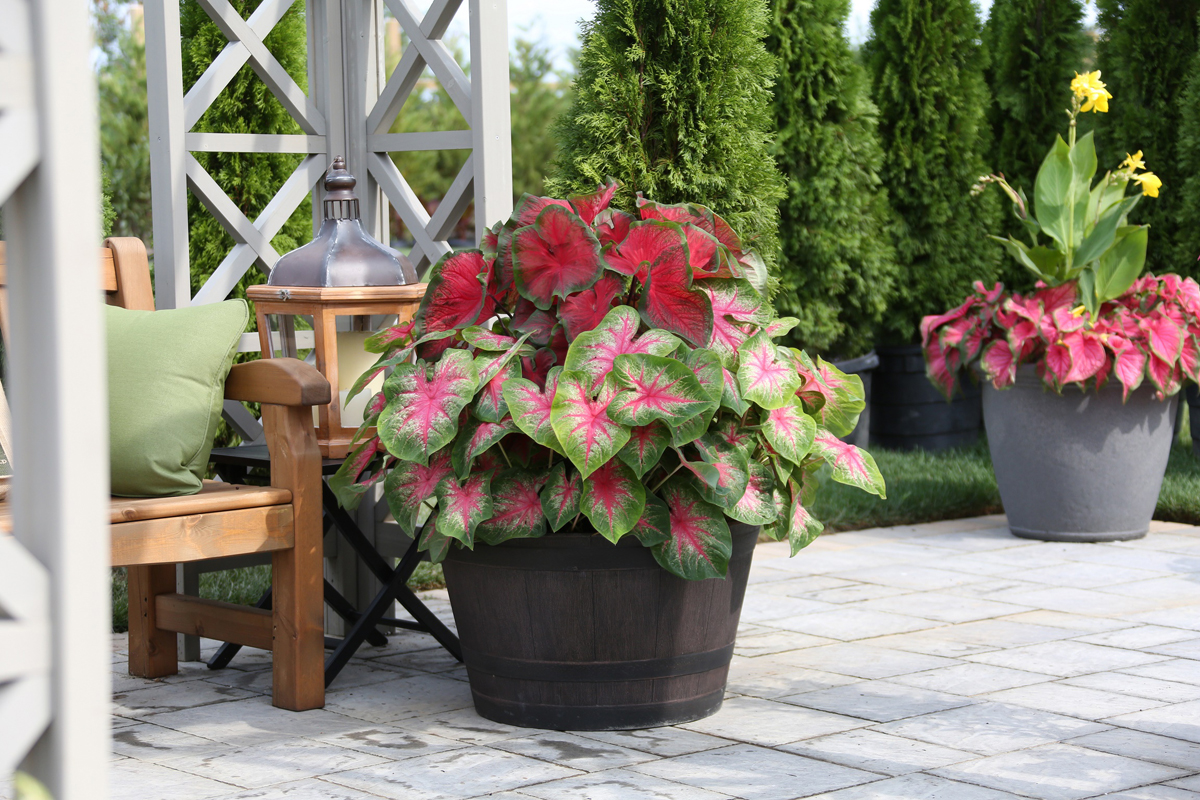|
Unroll Hay To Spread Nutrients
Submitted by Matt Kowalski and Bob Wagner
There are nutrients in hay - everyone knows that that's the whole point in feeding. Unrolling round hay bales onto a pasture where your animals are can help add nutrients to your pasture and your animals. Pasture management techniques like rotational grazing and stockpiling forage can help you minimize the need to feed your livestock, however there are times when you need to feed hay. Whether you are feeding hay because you are waiting for the grass to get high enough to graze that first spring flush, trying to get through a bad summer drought, or feeding because your forage is all gone, there are some ways that you can feed hay that will benefit both your animals and your pastures.
By unrolling the bales, you encourage the animals to spread out while they eat. When they are spread out, they are also spreading out their manure and urine. Between 70 and 90% of the nutrients removed from the soil by grazing a pasture or cutting hay are returned to the land as urine and manure. If you unroll those bales in a new place each time you feed, you can achieve a better distribution of the nutrients in the manure, urine and hay. Additionally, any hay that is not eaten will also be spread out, distributing the nutrients and organic matter in the hay, and creating healthy soils by going back on and down into the fields soils.

Pictured is a farm pasture field in Virginia where hay bales had been unrolled. The unused hay and manure piles are now evenly distributed, spreading the available nutrients throughout the pasture. (Photo courtesy of Matt Kowalski, of the Chesapeake Bay Foundation {CBF} )
Estimates prepared by the Virginia Cooperative Extension (VCE) show that an average 4 x 5-foot mixed-grass round bale contains around 12 pounds of nitrogen, five pounds of phosphorus, and 18 pounds of potassium. Each bale has about $20 worth of fertilizer in it! VCE research shows that each ton of hay removes about: 36 pounds nitrogen, 13 pounds phosphorus, and 54 pounds potassium from your soil. If you are importing hay onto your farm, you are also adding these nutrients to your pasture.
Bob Wagner from the US Dept. of Agricultures Natural Resources Conservation Service (NRCS) Montrose Field Office added these subjective comments, "For over 20 years John Benscoter (Technician, Nutrient Management Planner and Resource Conservationist) and I have worked together on conservation projects. We have travelled all over Susquehanna County and have been amazed at the number of round bales that seem to get stuck out in the fields. We had often wondered why they don't get removed from the fields, after doing all the work of baling them. (We knew that there are many reasons, often beyond the farmers' control to get them out of the fields in a timely manner.) However, we could never get it out of our heads the thought that if for nothing else the bales would be good for at least their nutrient value to the soil. Now we know, from the VCE research, that there is a value to the bales. We both realized that after a given period these bales will be deteriorating and only be of value for the organic matter to the soil for soil tilth and soil health. Now, if the farmers can just find the time to get those old bales moving and nutrients back into their fields soils, happy days will be here again; at least in the minds of two old conservationists."
Back to Top
Winning Flowers For Mother's Day
Submitted by Melinda Myers
Give mom a gift that provides beauty all season long with minimal care. A basket, container or garden bed filled with award-winning annuals is sure to generate a smile and enjoyment all summer long.
If mom likes to garden, provide her with a few seeds, potting mix and a container. Include a few new varieties of traditional favorites. Marigold Super Hero Spry is a compact French marigold with 2" dark maroon and golden yellow flowers. The striking bicolor blooms top 10- to 12-inch-tall plants. Best of all, mom will have flowers eight weeks from the time she sows the seeds until frost.

Canna South Pacific Orange is a compact vigorous variety with large leaves and blossoms that attract hummingbirds (Photo By: All-America Selections)
Surprise mom with a container of instant beauty. The 2017 All-America Selections (AAS) winner Calliope® Medium Dark red is beautiful alone or mixed with other flowers in containers, hanging baskets or in-ground gardens. It was selected by AAS, a non-profit national plant trialing organization, for its outstanding performance for home gardens.
Brocade Fire and Brocade Cherry Night are two more winning geraniums selected for their striking foliage and colorful blooms. The semi-double orange flowers and green and bronze foliage are sure to brighten any garden location or container. The green edged bronze leaves and red blooms of Brocade Cherry Night will surely impress mom and any of her visitors.
Or provide some added seasonal interest with Pinto Premium White to Rose geranium. Mom will enjoy watching the flower petals change from white to pink to rose-pink. The change occurs over time, providing interesting color combinations throughout the growing season.
Help mom bring the birds, butterflies and bees to her garden with a few sunflowers. They're easy to start from seed right in the garden and mom will enjoy the motion and color the visiting pollinators provide. Don't let a lack of space stop your mother from enjoying these colorful beauties. Suntastic Yellow with Black Center produces 5- to 6-inch flowers on 20-inch plants; perfect for containers and small space gardens.
Grow the taller, 4- to 5-inch-tall Ring of Fire sunflower for its unique blooms. The flower's chocolate brown center is surrounded by a ring of red and golden tipped petals. Mom can cut a few blooms to enjoy in a vase and allow the rest to set seed for wildlife to enjoy.
Add more wow to mom's garden with Onyx red ornamental pepper. The dark black foliage contrasts nicely with the shiny red fruit. Its stunning beauty adds ornamental appeal to containers and garden beds. Ornamental peppers are edible but very hot, so it's best to look and not taste. Or include the family-friendly Chilly Chili ornamental pepper for all the beauty without the heat. Perfect for families with young children that like to explore. The abundant upright fruit changes from yellow to orange to red, providing a wonderful display throughout the season.
Bring the tropics to your mom's patio or deck with cannas. Their large foliage and bright colored flowers make any home feel like an exotic escape. South Pacific Orange, South Pacific Scarlet and Tropical Rose are compact vigorous varieties suited to containers and the garden. The large leaves add drama to the garden and once their blossoms emerge they'll provide lots of color and hummingbird appeal.
Make this Mother's Day one you and your mother will remember throughout the summer. Give her a gift of winning beauties to brighten her containers, gardens and uplift her spirits all season long.
Melinda Myers has written more than 20 gardening books, including Small Space Gardening. She hosts The Great Courses "How to Grow Anything" gardening DVD series and the nationally syndicated Melinda's Garden Moment TV & radio segments. Myers is a columnist and contributing editor for Birds & Blooms magazine and was commissioned by AAS for her expertise to write this article. Myers' web site is www.melindamyers.com.
Back to Top
Red Cross Urges Blood Donations
This May, the American Red Cross is calling for donors to give blood and platelets regularly to be prepared to meet the needs of patients in emergency situations.
According to the National Trauma Institute, trauma accounts for approximately 41 million emergency department visits and 2 million hospital admissions each year.
Regular blood, platelet and plasma donations help ensure that blood is available at a moment's notice. In fact, it is the blood on the shelves that is used to help save lives at the time of an accident or sudden illness.
Donors of all blood types are urged to roll up a sleeve this May to help meet the needs of trauma patients and others with serious medical conditions. Make an appointment to donate blood by downloading the free Red Cross Blood Donor App, visiting RedCrossBlood.org or calling 1-800-RED CROSS (1-800-733-2767).
All those who come to donate from April 9 to May 13, 2018, will be entered to win one of three $1,000 gift cards to a national home improvement retailer, courtesy of Suburban Propane. (Restrictions apply. More details are available at RedCrossBlood.org/Lets-Do-More.)
Local stations for blood donations will be at the following locations:
Montrose, May 17, 2 pm - 6 pm at the Endless Mountains Health Systems, 100 Hospital Drive.
New Milford, May 8, 1 pm - 7 pm at the South New Milford Baptist Church, 2967 Harford Road.
Susquehanna, May 2, 12:30 pm - 5:30 pm at St John the Evangelist Catholic Church, 15 East Church Street.
May 7, 9 am - 2 pm at the Susquehanna Community High School, 3192 Turnpike Street.
Back to Top
Pet of the Week
Submitted by True Friends Animal Welfare Center, 16332 SR 706, Montrose, PA 18801. Phone 570-278-1228 Website: truefriendsawc.com

Logan
We're not quite sure what Logan's breeds are. A combination of-maybe some husky, perhaps a touch of lab, but definitely a mix of great looks and a warm personality! With his piercing golden eyes and stunning coat of many colors, this 3 year old neutered boy just had his 1 year anniversary at the shelter and we can't explain it. Lovable, gentle, friendly and great on a leash, Logan would do best as an only pet who would thrive as a family member. So why not give this unique looking, Mr. Personality a chance to show you all the love he has to give? Let's give him something to celebrate on his anniversary by finding him his forever home!
This Saturday Abington Hill Farms, located at 424 East Main Street in Dalton, will be hosting a pony/horse ride fundraiser for our shelter from 10AM-2PM. They are also having a bake sale, basket raffle, and vendor booths for shopping. We hope you can join us for a day at the farm to support True Friends!
Back to Top
Colorful Caladiums Brighten Gardens
Submitted by Melinda Myers
Tuck them into the garden, pop some in a container or dress up a window box. Then water as needed, add a bit of fertilizer and wait for the color explosion.
The showy heart-shaped leaves of caladiums come in combinations of pink, red, white and green. These heat-loving plants provide beautiful color all season long. Best of all, no deadheading is needed.

Caladiums planted in container gardens to dress up patios and decks (Photo courtesy of Longfield-Gardens.com)
Caladiums can be used to create a stunning garden almost anywhere around your home. These tropical beauties grow well in full to partial shade, and some varieties grow equally well in full sun. Choose varieties that will provide the color, size and look you want to achieve, and that match the light conditions in your yard.
Compact caladiums, such as lime and dark pink Miss Muffet, grow about 12" tall and are perfect for lining a pathway, edging a flowerbed or dressing up a container. Florida Sweetheart's bright, rose-pink leaves have ruffled green edges, and Gingerland has creamy white leaves that are decorated with splashes of green and red. All of these miniature varieties combine nicely with larger caladiums and elephant ears.
Step up the color impact with caladium Red Flash. This full-size caladium grows about 20" tall and has brilliant red centers, decorated with pink dots that pop against the large, deep green leaves. Use these anywhere you want a big splash of color in a garden bed or container.
Combine caladiums with shade-loving annuals like begonias, coleus, and mildew-resistant impatiens or other summer bulbs like cannas and elephant ears. Visit Longfield Gardens (longfield-gardens.com) for a bit of inspiration and container design ideas. You'll find simple combinations that provide big impact on a deck, patio or entryway.
When planting caladiums directly into the garden, wait until at least two weeks after all danger of frost has passed. Nights should be warm, and the soil temperature should be at least 65 degrees F. Prepare the soil before planting. Add compost or other organic matter to improve drainage in clay soil and the moisture-holding ability in fast draining soils. Plant tubers about six inches apart and two inches below the soil surface. Water thoroughly and often enough to keep the soil moist, but not soggy.
Those gardening in cooler climates may want to start the tubers indoors for an earlier show outdoors. Plant indoors four to six weeks before moving them into the garden. Set the tubers near the surface of a shallow container filled with a well-drained potting mix. Grow them in a warm sunny spot indoors, keeping the soil barely moist. Move outdoors once the danger of frost has passed and the soil has warmed.
As the summer temperature rises, watch your caladiums shine while many other flowers fade in the summer heat and humidity. Continue to water as needed and fertilize throughout the summer to encourage new growth.
Those gardening in zones nine through eleven can leave their caladiums in place year-round. Others can either treat these colorful beauties as annuals or dig up the tubers and overwinter them indoors. Dig tubers in early fall when soil temperatures drop to 55 degrees. Spread them out in a warm, dry location for at least a week. Label each variety, remove the foliage and place tubers in a mesh bag or pack loosely in dry peat moss. Store in a cool, dark location at around 60 degrees.
Make this the year you add caladiums for beautiful splashes of color throughout your landscape all season long.
Note: Melinda Myers has written more than 20 gardening books, including Small Space Gardening. She hosts The Great Courses "How to Grow Anything: Food Gardening For Everyone" DVD set and the nationally syndicated Melinda's Garden Moment TV & radio segments. Myers is a columnist and contributing editor for Birds & Blooms magazine and was commissioned by Longfield Gardens for her expertise to write this article. Myers's web site is www.melindamyers.com.
Back to Top
May Is Lyme Disease Awareness Month
Lyme Disease Coalition, Inc. (LDC, Inc.) and supporters will walk from the bottom of Public Avenue in Montrose, PA to the top at the Susquehanna County Courthouse stairs. The LDC, Inc. will have a tent with educational literature, awareness items, and free drawing(s) for Tick Aid Kit(s) to help educate and prevent Lyme and related conditions. Susquehanna County's Suicide Initiative now in partnership with the Advocacy Alliance will join LDC, Inc. with information, as suicide is one of the preventable causes of death with Lyme patients. Other organizations and activities may be added as volunteers and interest grows.
LDC, Inc. was created to enhance and further efforts being made to reduce the threat of increased cases of Lyme and related conditions and to support those currently suffering with chronic long term issues caused by the disease.
In only a year and a half, LDC, Inc. has hosted several support group meetings across the county, attended an employee health seminar and many area events to help answer questions about Lyme disease and the struggles that it poses. Volunteers have logged over 1000 hours, 4000 miles and handed out over 3000 pieces of literature just in 2017.
The LCD, Inc. has also created "Tick Aid Kits" encouraging others to build these kits and treat them as their second first aid kit to keep in the house, car and with any outdoor activity gear. These kits are given away in free drawings at events as well as for sale with free products sponsored by Sawyer Products and Butler Home Products.
Children of elementary age are at the highest risk along with outdoor workers. "Tick Talk for Kids", a presentation geared towards this age of children has also been developed to help get children more involved with pro-active prevention. The program was presented to Lathrup Street Elementary School with over 400 receiving the presentation as well as take home packets to include the entire family with educational materials.
Realizing the need for surveillance in the area to target the highest risk areas, supplies and materials were purchased to create and conduct tick drags in order to help find hot spots and send ticks in for testing. Testing will not only provide areas of highest infection, but also aid in passive research with other organizations. LDC, Inc. received training from Amanda B. Roome, of Binghamton University. LDC, Inc. plans to roll out with surveillance this spring.
Just started is our Book Program, to get books into our local libraries. Two Authors have pledged at least one book to donate to a library in our county. LDC, Inc. encourages anyone with Lyme related books no longer being used to also donate to our program, as well as purchasing a spare copy of their favorite to donate.
Back to Top
| Last modified: 04/30/2018 |
© |
|


















